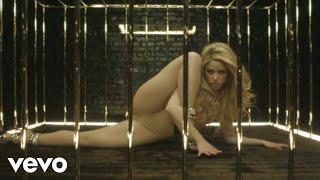
Fangazoo Part 2 Bedtime Stories & Storytelling RK Alker Funny Childrens Book Author Kids Storyteller
Bedtime Stories & Storytelling Fangazoo Part 2
Bedtime stories for kids or storytelling online by me, R.K. Alker a funny children’s book author & kids storyteller from Lancashire. A famous children's author creating stories for kids, children’s fiction & comedy children's book characters in his kids books.
I will read a story for kids as a bedtime story in this storytime on YouTube storytelling online which I hope will be the kids perfect bedtime stories.
My website has storytelling online social media links to YouTube, Facebook, Instagram, Twitter, LinkedIn, Pinterest for streaming & live storytime for children. It is like an online kids bookshelf full of funny kids books.
I am running a drawing competition for kids to inspire the next generation of artists & writers to place amongst the top 19 art contests for kids and teens.
I hope to be a positive influence in kids book reading & for kids books online & that my children will allow my books to take pride of place on their children’s bookshelf.
Storytelling
Wikipedia says storytelling describes the social and cultural activity of sharing stories, sometimes with improvisation, theatrics, or embellishment. Every culture has its own stories or narratives, which are shared as a means of entertainment, education, cultural preservation or instilling moral values.[1] Crucial elements of stories and storytelling include plot, characters and narrative point of view.
The term "storytelling" can refer in a narrow sense specifically to oral storytelling and also in a looser sense to techniques used in other media to unfold or disclose the narrative of a story.
Historical perspective
A very fine pair dated 1938 A.D. The epic of Pabuji is an oral epic in the Rajasthani language that tells of the deeds of the folk hero-deity Pabuji, who lived in the 14th century.
Storytelling predates writing. The earliest forms of storytelling were usually oral combined with gestures and expressions. In addition to being part of religious rituals, some archaeologists believe rock art may have served as a form of storytelling for many ancient cultures.[2] The Australian aboriginal people painted symbols from stories on cave walls as a means of helping the storyteller remember the story. The story was then told using a combination of oral narrative, music, rock art and dance, which bring understanding and meaning of human existence through remembrance and enactment of stories.[3] People have used the carved trunks of living trees and ephemeral media (such as sand and leaves) to record stories in pictures or with writing. Complex forms of tattooing may also represent stories, with information about genealogy, affiliation and social status.[4]
With the advent of writing and the use of stable, portable media, stories were recorded, transcribed and shared over wide regions of the world. Stories have been carved, scratched, painted, printed or inked onto wood or bamboo, ivory and other bones, pottery, clay tablets, stone, palm-leaf books, skins (parchment), bark cloth, paper, silk, canvas and other textiles, recorded on film and stored electronically in digital form. Oral stories continue to be created, improvisationally by impromptu storytellers, as well as committed to memory and passed from generation to generation, despite the increasing popularity of written and televised media in much of the world.
Contemporary storytelling
Modern storytelling has a broad purview. In addition to its traditional forms (fairytales, folktales, mythology, legends, fables etc.), it has extended itself to representing history, personal narrative, political commentary and evolving cultural norms. Contemporary storytelling is also widely used to address educational objectives.[5] New forms of media are creating new ways for people to record, express and consume stories.[6] Tools for asynchronous group communication can provide an environment for individuals to reframe or recast individual stories into group stories.[7] Games and other digital platforms, such as those used in interactive fiction or interactive storytelling, may be used to position the user as a character within a bigger world. Documentaries, including interactive web documentaries, employ storytelling narrative techniques to communicate information about their topic.[8] Self-revelatory stories, created for their cathartic and therapeutic effect, are growing in their use and application, as in Psychodrama, Drama Therapy and Playback Theatre.[9] Storytelling is also used as a means by which to precipitate psychological and social change in the practice of transformative arts.[10][11][12]
Oral traditions
An African storyteller in Parc des Buttes Chaumont, Paris, France.
Oral traditions of storytelling are found in several civilisations; they predate the printed and online press. Storytelling was used to explain natural phenomena, bards told stories of creation and developed a pantheon of gods and myths. Oral stories passed down.
Bedtime stories for kids or storytelling online by me, R.K. Alker a funny children’s book author & kids storyteller from Lancashire. A famous children's author creating stories for kids, children’s fiction & comedy children's book characters in his kids books.
I will read a story for kids as a bedtime story in this storytime on YouTube storytelling online which I hope will be the kids perfect bedtime stories.
My website has storytelling online social media links to YouTube, Facebook, Instagram, Twitter, LinkedIn, Pinterest for streaming & live storytime for children. It is like an online kids bookshelf full of funny kids books.
I am running a drawing competition for kids to inspire the next generation of artists & writers to place amongst the top 19 art contests for kids and teens.
I hope to be a positive influence in kids book reading & for kids books online & that my children will allow my books to take pride of place on their children’s bookshelf.
Storytelling
Wikipedia says storytelling describes the social and cultural activity of sharing stories, sometimes with improvisation, theatrics, or embellishment. Every culture has its own stories or narratives, which are shared as a means of entertainment, education, cultural preservation or instilling moral values.[1] Crucial elements of stories and storytelling include plot, characters and narrative point of view.
The term "storytelling" can refer in a narrow sense specifically to oral storytelling and also in a looser sense to techniques used in other media to unfold or disclose the narrative of a story.
Historical perspective
A very fine pair dated 1938 A.D. The epic of Pabuji is an oral epic in the Rajasthani language that tells of the deeds of the folk hero-deity Pabuji, who lived in the 14th century.
Storytelling predates writing. The earliest forms of storytelling were usually oral combined with gestures and expressions. In addition to being part of religious rituals, some archaeologists believe rock art may have served as a form of storytelling for many ancient cultures.[2] The Australian aboriginal people painted symbols from stories on cave walls as a means of helping the storyteller remember the story. The story was then told using a combination of oral narrative, music, rock art and dance, which bring understanding and meaning of human existence through remembrance and enactment of stories.[3] People have used the carved trunks of living trees and ephemeral media (such as sand and leaves) to record stories in pictures or with writing. Complex forms of tattooing may also represent stories, with information about genealogy, affiliation and social status.[4]
With the advent of writing and the use of stable, portable media, stories were recorded, transcribed and shared over wide regions of the world. Stories have been carved, scratched, painted, printed or inked onto wood or bamboo, ivory and other bones, pottery, clay tablets, stone, palm-leaf books, skins (parchment), bark cloth, paper, silk, canvas and other textiles, recorded on film and stored electronically in digital form. Oral stories continue to be created, improvisationally by impromptu storytellers, as well as committed to memory and passed from generation to generation, despite the increasing popularity of written and televised media in much of the world.
Contemporary storytelling
Modern storytelling has a broad purview. In addition to its traditional forms (fairytales, folktales, mythology, legends, fables etc.), it has extended itself to representing history, personal narrative, political commentary and evolving cultural norms. Contemporary storytelling is also widely used to address educational objectives.[5] New forms of media are creating new ways for people to record, express and consume stories.[6] Tools for asynchronous group communication can provide an environment for individuals to reframe or recast individual stories into group stories.[7] Games and other digital platforms, such as those used in interactive fiction or interactive storytelling, may be used to position the user as a character within a bigger world. Documentaries, including interactive web documentaries, employ storytelling narrative techniques to communicate information about their topic.[8] Self-revelatory stories, created for their cathartic and therapeutic effect, are growing in their use and application, as in Psychodrama, Drama Therapy and Playback Theatre.[9] Storytelling is also used as a means by which to precipitate psychological and social change in the practice of transformative arts.[10][11][12]
Oral traditions
An African storyteller in Parc des Buttes Chaumont, Paris, France.
Oral traditions of storytelling are found in several civilisations; they predate the printed and online press. Storytelling was used to explain natural phenomena, bards told stories of creation and developed a pantheon of gods and myths. Oral stories passed down.
Тэги:
#Bedtime_stories_for_kids #Bedtime_story #Books #Celebrities #Children #Children’s_Books #Children’s_Literacy #Children’s_Literature #Children’s #children's_stories #Considerate #Education #Friendship #good_values #kids #Read_Aloud #Reading #stories_for_children #Stories #Story #Storyline_Online #Storyline #Storytelling_Online #Storytelling #Storytime #Values #fairy_tales #story_time #funny #kids_story_in_english #scary_stories #for_kids #stories_for_kids #bedtime_stories #story_for_kidsКомментарии:
Top Signs Boys are in Puberty
AMAZE Org
Yono games nightfall hunting real dark game play
NIGHTFALL HUNTING . 22k views . 3 hours ago ...
香港無綫|7:30一小時新聞|2025年5月24日|
無綫新聞 TVB NEWS Official
What Are The Reading Royals? - The Winter Sport Xpert
TheWinterSportXpert







![[스페인 워홀] 울보 워홀러의 현실 | 스페인 워홀 온 이유, 외로움 해소법, 스페인어 실력 [스페인 워홀] 울보 워홀러의 현실 | 스페인 워홀 온 이유, 외로움 해소법, 스페인어 실력](https://rtube.cc/img/upload/QWtpdzhEdFZUazU.jpg)


















